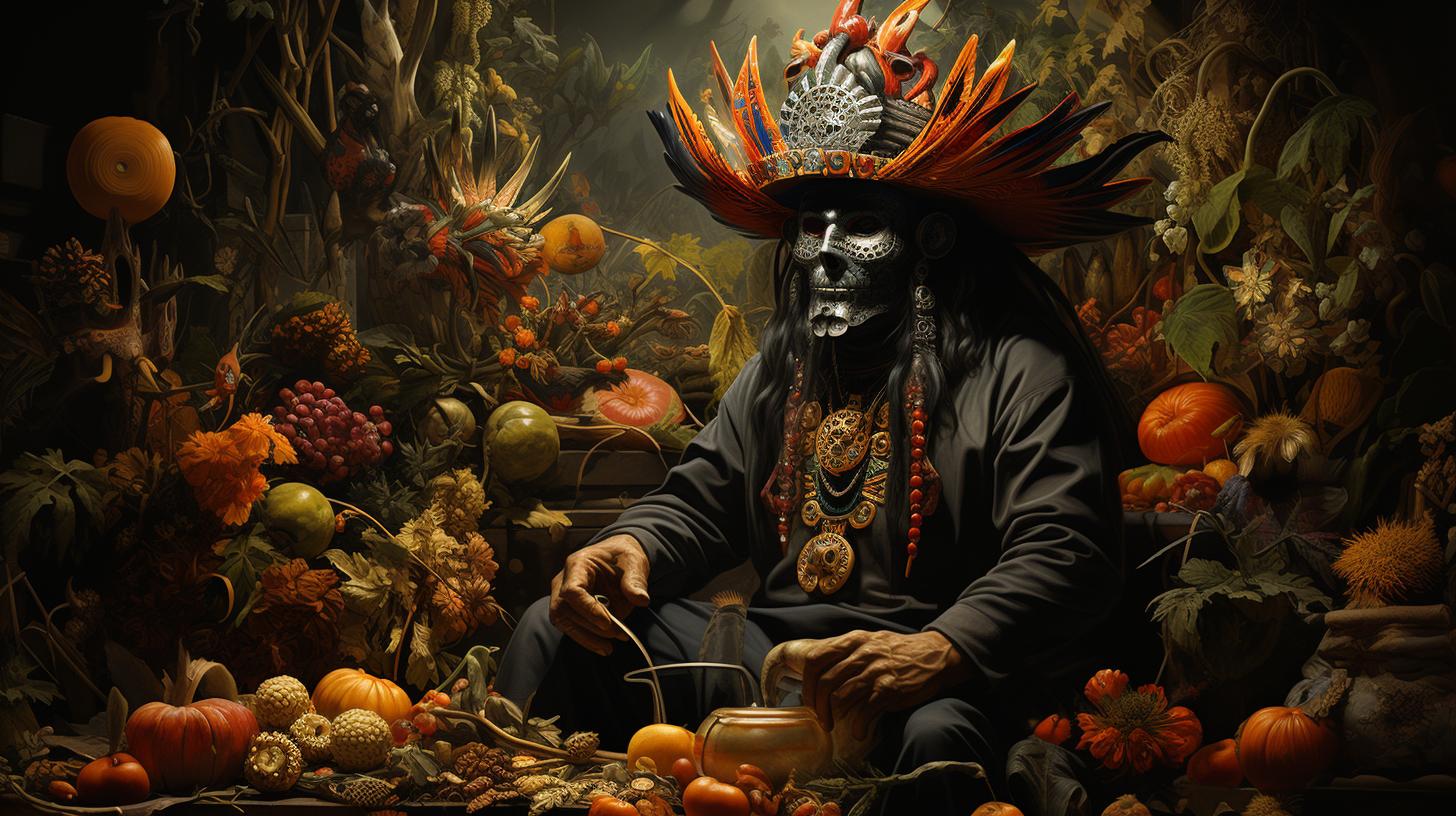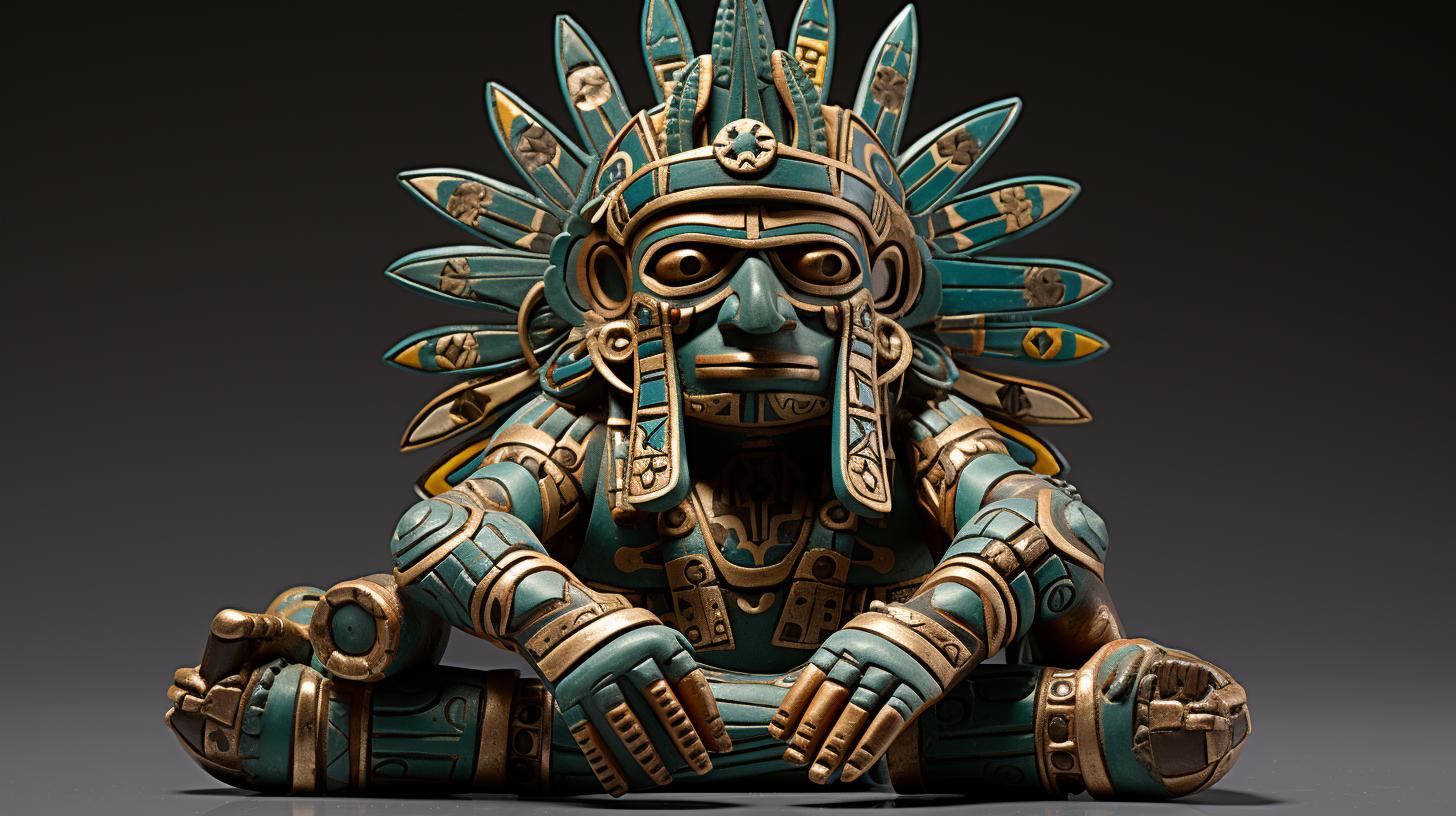Tepoztecatl God: An Aztec Deity of Pulque, Intoxication, and Fertility

Tepoztecatl is an Aztec deity associated with pulque, fertility, and intoxication. According to Aztec mythology, Tepoztecatl is one of the four hundred children of Mayahuel, the goddess of agave, and Pantecatl, the deity who discovered the fermentation process of pulque.
This alcoholic beverage played a significant role in Aztec religious rituals and was closely linked to Tepoztecatl, who was also revered for his connection to fertility and the moon. The Templo del Tepozteco, located in Tepoztlán, Morelos, is a pilgrimage site where Aztecs used to worship the god of the four hundred rabbits.
Unfortunately, during the Spanish conquest in the 16th century, the statue of Tepoztecatl was destroyed. These are just a few highlights about the intriguing deity known as Tepoztecatl.
Tepoztecatl: The Aztec Deity of Pulque, Fertility, and Intoxication
Delve into the fascinating world of Tepoztecatl, the Aztec god associated with pulque, fertility, and intoxication.
Explore the origins and mythology surrounding this deity, which include the parentage by Mayahuel, the goddess of agave, and Pantecatl, who discovered the fermentation process of pulque. Learn about Tepoztecatl’s close connection to fertility and the moon, making him a revered figure in Aztec religious rituals.
Origins and Mythology
Take a journey into the ancient Aztec myths and legends that surround Tepoztecatl. Discover the significance of Mayahuel, the goddess of agave, who plays a crucial role in Tepoztecatl’s lineage.
Learn about Pantecatl, the deity credited with discovering the fermentation process of pulque, a drink that held a prominent place in Aztec religious rituals. Uncover the myths that link Tepoztecatl to fertility and his association with the moon.
Tepoztecatl Iconography
Delve into the rich iconography associated with Tepoztecatl. Explore the symbolism of rabbits and their connection to the god of pulque. Marvel at the depictions of Tepoztecatl, with his nose pointing upwards and his face painted half red and half black.
Understand the significance of the rabbit as a symbol of Tepoztecatl in Aztec culture and how different degrees of intoxication were named after rabbits.
Worship and Rituals
Explore the worship and rituals dedicated to Tepoztecatl. Discover the Templo del Tepozteco, a sacred site that served as a center for Tepoztecatl’s worship. Learn about the rituals and offerings made during the Tepehíhuitl festivities, where sculptures of amaranth in the shape of snakes and mountain-like figurines were created as sacred offerings honoring the deity and the mountains.
Uncover the cultural significance of Tepoztecatl’s worship during the Aztec civilization.
Cultural Significance and Present-day Worship
Uncover the cultural significance of Tepoztecatl to this day. Explore how Tepoztecatl is still revered as a tribal god in Tepoztlán, Morelos, Mexico. Learn about the pilgrimage site known as the Pirámide de Tepozteco, where worshippers traveled from different regions to pay homage to the god of pulque and the four hundred rabbits.
Reflect on the unfortunate destruction of Tepoztecatl’s statue by Spanish conquistadors in the 16th century and its impact on the continued worship and cultural significance of the deity in present times.
Tepoztecatl’s Association with Fertility and the Wind
Tepoztecatl, the Aztec deity, had a significant association with fertility and the wind. These aspects of Tepoztecatl’s character played crucial roles in Aztec religious practices and beliefs. Let’s explore two key aspects related to Tepoztecatl’s connection with fertility and the wind:
Tepoztecatl and the Cult of Fertility
The cult of fertility in Aztec society was deeply intertwined with Tepoztecatl.
As a god associated with pulque and intoxication, Tepoztecatl symbolized the bountiful fertility of the earth. The Aztecs believed that by honoring Tepoztecatl and partaking in rituals dedicated to fertility, they would ensure prosperous harvests and abundance in their lives.
The ceremonies dedicated to Tepoztecatl as a fertility god involved offerings, dances, and music. These rituals sought to invoke the god’s blessings upon the fields, women, and the general prosperity of the community.
The presence of Tepoztecatl during these rituals was believed to enhance fertility and ensure the continuation of life.
The Role of Tepoztecatl in Tláloc’s Rain Festivals
Tepoztecatl’s connection with the wind and fertility was further emphasized through his role in Tláloc’s rain festivals. Tláloc, the Aztec god of rain, was believed to provide water essential for crops and sustenance.
Tepoztecatl acted as an intermediary between Tláloc and the people, ensuring the flow of rain for agricultural abundance.
During these rain festivals, Tepoztecatl was venerated alongside Tláloc, with elaborate ceremonies held to petition for rainfall.
The Aztecs believed that Tepoztecatl’s influence over the wind played a crucial role in bringing the much-needed rain showers for successful crop growth.
The association of Tepoztecatl with fertility and the wind illustrates the deep reverence the Aztecs had for these natural forces.
Their belief in Tepoztecatl’s powers as a god of fertility and his connection to Tláloc ensured their devotion and the continuation of their agricultural way of life.
The Fermentation Process and Pulque in Aztec Mythology
The Fermentation Process played a crucial role in the creation of pulque, an alcoholic beverage associated with Aztec mythology.
Pantecatl, the father of Tepoztecatl, is credited with discovering this process. Pulque, derived from the agave plant, was highly regarded in Aztec culture and had deep religious significance.
- iscovering the Fermentation Process Pantecatl’s Contribution
Pantecatl’s significant contribution to Aztec mythology was his discovery of the fermentation process used to create pulque.

This fermented drink was derived from extracting the sap of the agave plant, which was considered sacred by the Aztecs. Through experimentation and observation, Pantecatl uncovered the transformative nature of the agave sap, leading to the creation of pulque.
- Pulque Gods and the Centzon Tōtōchtin (Four Hundred Rabbits)
Within Aztec mythology, several deities were associated with pulque, collectively known as the Centzon Tōtōchtin or the Four Hundred Rabbits.
These gods were believed to govern the various stages of intoxication, ranging from mild inebriation to complete drunkenness. Tepoztecatl, as an important deity within this pantheon, represented the embodiment of pulque and its effects on the worshipers.
- Tepoztecatl as the Embodiment of the Agave and Pulque
Tepoztecatl, the Aztec god of pulque, fertility, and intoxication, not only symbolized the effects of pulque but also embodied the essence of the agave plant itself.
He represented the transformative power of fermentation, which mirrored the transformative power of fertility and growth in nature. Tepoztecatl’s association with pulque made him an important figure in Aztec religious ceremonies and rituals.
In conclusion, the fermentation process and pulque held significant mythological and religious importance in Aztec culture. Pantecatl’s discovery of the fermentation process led to the creation of pulque, which became deeply intertwined with Aztec mythology.
Tepoztecatl, as the god of pulque, represented the transformative and intoxicating properties of this sacred beverage, as well as embodying the essence of the agave plant itself.
Tepoztecatl God and Alcohol in Contemporary Perspective
Tepoztecatl, the Aztec god of alcohol and intoxication, holds a significant place in contemporary understanding and cultural perspectives.
This section delves into the enduring relevance of Tepoztecatl and his association with alcohol in present-day contexts.



















